Miklos & Tori's Japan Adventures
To celebrate's Tori's 34th birthday, we took a 4-day weekend and went away to Iya Valley. It's a bit more remote which meant we had to rent a car to get there. Iya Valley is located on the Southern island, Shikoku, and it takes about 5 or 6 hours to get there from Nagoya, depending on which route you take.
We wanted to camp in Iya and we bought a tent for the occasion, but it was supposed to rain so we upgraded to a cabin. Luckily, the rain never came, and even so, it was still nice being in a cabin.
Our first day in Iya we went to a vine bridge. This is the most popular vine bridge because it's the easiest to access, and it can get extremely crowded. There are entire tour buses that take big groups of people to this spot, but luckily when we went it wasn't crowded at all. Our camp site was only about a ten minute walk from this bridge
Victoria Robkis
49 chapters
16 Apr 2020
Tori's B-day Trip
September 17, 2020
|
Iya Valley
To celebrate's Tori's 34th birthday, we took a 4-day weekend and went away to Iya Valley. It's a bit more remote which meant we had to rent a car to get there. Iya Valley is located on the Southern island, Shikoku, and it takes about 5 or 6 hours to get there from Nagoya, depending on which route you take.
We wanted to camp in Iya and we bought a tent for the occasion, but it was supposed to rain so we upgraded to a cabin. Luckily, the rain never came, and even so, it was still nice being in a cabin.
Our first day in Iya we went to a vine bridge. This is the most popular vine bridge because it's the easiest to access, and it can get extremely crowded. There are entire tour buses that take big groups of people to this spot, but luckily when we went it wasn't crowded at all. Our camp site was only about a ten minute walk from this bridge
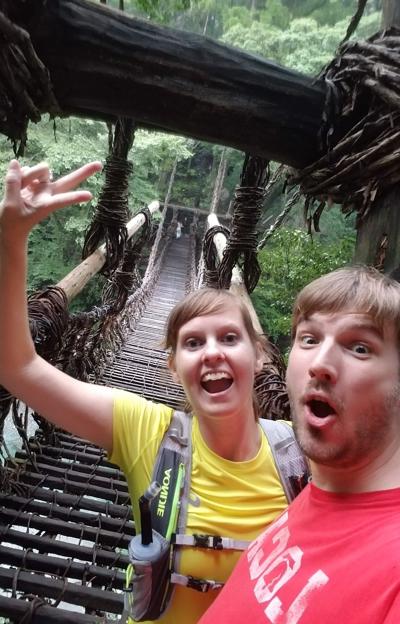
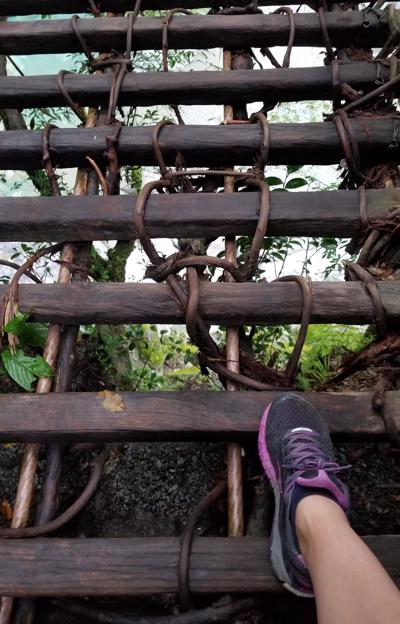

which made it super convenient to get to.
Later in our trip we went a husband and wife vine bridge (meaning they're very close to one another- and that's how they got that nickname). They were about an hour away from the first vine bridge we went to, and they were incredible! They also had a monkey cart next to them. In case anyone is not sure what that is, we'll explain. It's a box-like structure that you sit in and it's attached to a cable. You literally pull yourself using the cable across the river beneath. It's a bit tiring on your arms, but it's such an incredible, fun experience.
Iya Valley used to have tons of vine bridges in the area. Legend has it that they were first built about 800 years ago by Samurai that were fleeing battle, and who escaped to the mountainous area of Iya Valley to seek refuge. They built the bridges in case they were


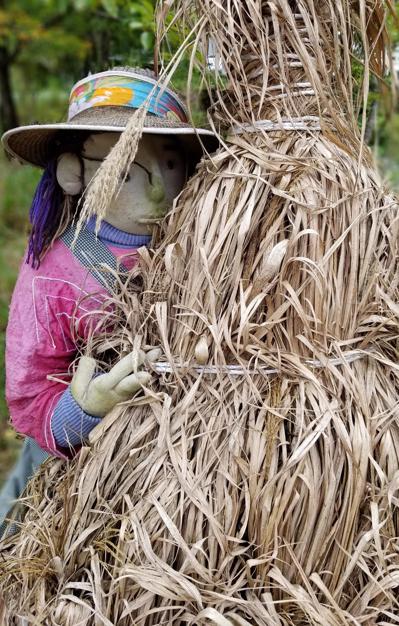
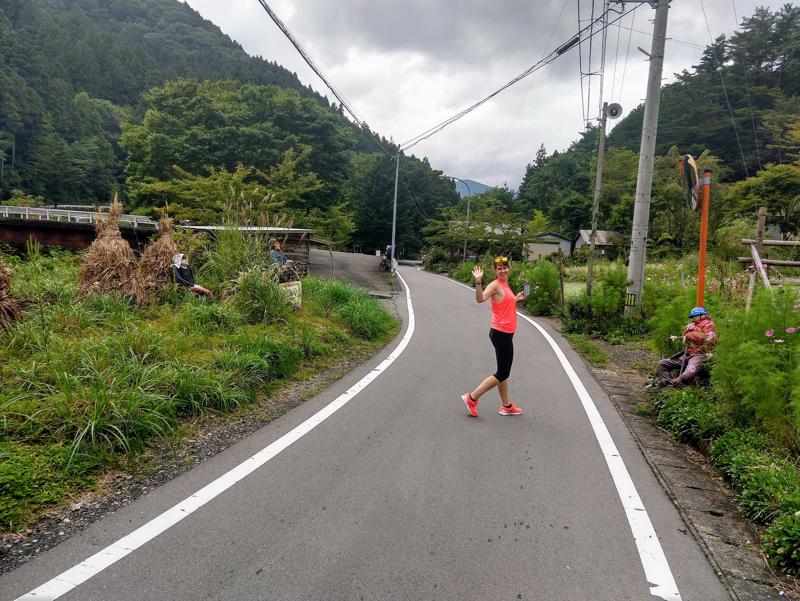



pursued and needed to cut the bridges down quickly.
Today, the vine bridges are rebuilt every 3 years for safety measures, and they're also reinforced with steel, making them extremely safe. However, the slates on the bottom are spread quite far apart, meaning you need to watch where you're walking. This can be quite intense for anyone who is afraid of heights, as you watch the rushing river below you. Also, the vine bridge sways! Think you could handle it? Tori couldn't! But, she did make it slightly onto the bridge, simply to get some good photos! :)
On our trip we also took a boat ride through a beautiful gorge. We also stopped in some scenic spots, like a lookout where you could oversee a bend in the gorge. And, of course, we had to visit the "peeing boy" statue. Did you guess what it is? As the name implies, it's a statue of a urinating boy. He's standing on a rock jutting out over a high cliff. Supposedly, young boys would dare one another to stand on the rock and urinate, which displayed their bravery, as the height of the cliff is not for the faint of heart.
Tori's favorite spot on the trip was Nagoro Village, which is nicknamed



"Scarecrow Village." Back in the day Nagoro was a bustling village full of life. However, over time many people left for life in cities, and the population declined. Today, it's a bit haunting to see a half-abandoned village. Currently, there are only about 30 inhabitants. What makes Nagoro special is that one of the inhabitants make life-like scarecrows and stages them in clever ways throughout the village: biker riders, families waiting at a bus stop, gardeners, etc. There is actually an abandoned school that you can enter and it is full of hundreds of scarecrows. They're doing things like having a tug-of-war contest, wearing kimonos, having dance competitions, etc. The scarecrows are meant to help people envision what life in Nagoro used to be like. It's a beautiful display of folk art that cannot be seen anywhere else. If you're in Japan, this is an absolute must-see!
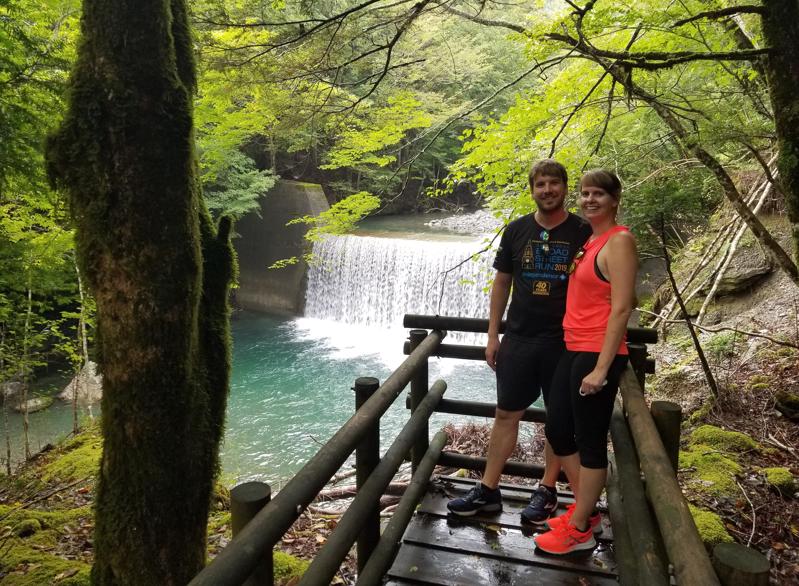
1.
The BIG Move
2.
The First Week
3.
October 1st -- The day everything happened
4.
So Many ROAD BLOCKS
5.
Cool Restaurants
6.
Move In
7.
The old, temporary apartment
8.
Tsurumai Park & Vegan Fest
9.
The day of many deliveries
10.
Being vegetarian in Japan
11.
We're going to the OLYMPICS
12.
Earthquake proof labs
13.
🎃Happy Halloween 🎃
14.
Kyoto Trip
15.
11/11 ... Pocky Day
16.
Yakitori time
17.
Westgate
18.
Peter Pladman's Visit
19.
Our Hike from Magome to Tsumago
20.
Shirakawago & Takayama
21.
Fire Ramen in Kyoto
22.
It's Beginning to Look a lot like Christmas
23.
Nagoya's Cultural Night
24.
🎄Merry Christmas🎄
25.
Christmas Lights
26.
Sapporo Snow Festival
27.
Day trip to Hamamatsu
28.
Tori's B-day Trip
29.
Himeji
30.
Pumpkin Painting
31.
Flavored Soy Milks
32.
Halloween
33.
Kobe
34.
Okazaki
35.
Miklos's JLPT
36.
Rock Climbing
37.
Christmas & New Years
38.
The Site of Reversible Destiny
39.
Nabana no Sato
40.
Skiing & Snowboarding
41.
Visiting Snow Monkeys in Japan
42.
Gifu University
43.
Golden Week
44.
The Sweetest Hubby
45.
Pink Moss Galore
46.
Ukai - Cormorant Fishing
47.
Inuyama
48.
Rice Fields and Sun Flowers
49.
Visiting Northern Japan (Tohoku)
Share your travel adventures like this!
Create your own travel blog in one step
Share with friends and family to follow your journey
Easy set up, no technical knowledge needed and unlimited storage!